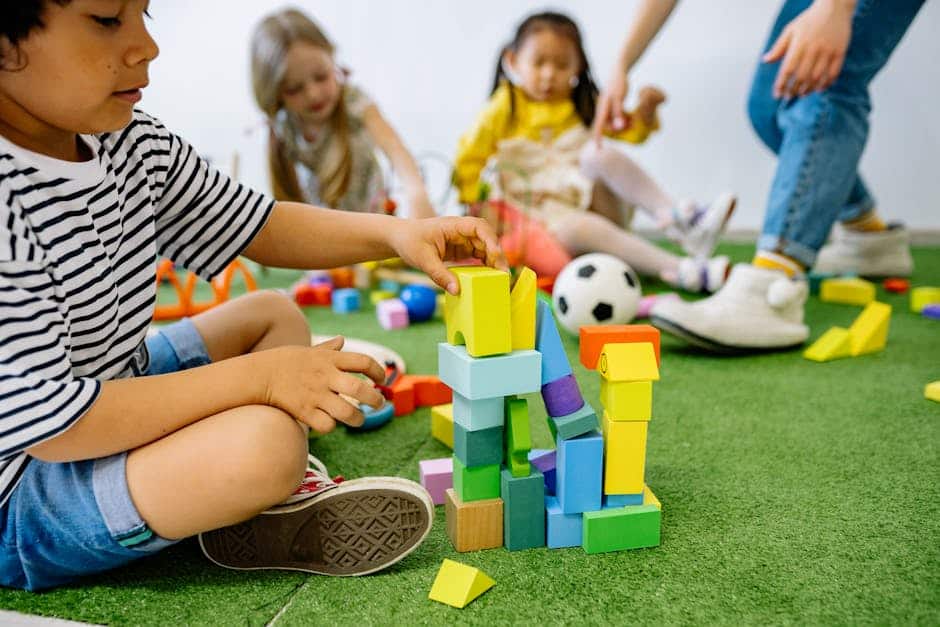The Benefits of Cooperative Toys for Teamwork Skills
Children’s playtime is more than just fun—it’s a vital part of their development. Cooperative toys, in particular, play a significant role in nurturing teamwork skills. In this blog post, we’ll explore how these toys can benefit children, emphasizing the importance of teamwork in their growth journey. Let’s dive in! 🌟
Table of Contents
1. Introduction to Cooperative Toys
2. The Role of Cooperative Toys in Team Building
3. Key Benefits of Cooperative Toys
4. Choosing the Right Cooperative Toys
5. Conclusion
6. FAQs
Introduction to Cooperative Toys
Cooperative toys are designed to encourage children to work together towards a common goal, rather than competing against one another. These toys can range from board games to construction sets and are crafted to promote communication, shared decision-making, and problem-solving. By integrating these toys into playtime, children can develop essential interpersonal skills that are crucial in both academic and social settings.
The Role of Cooperative Toys in Team Building
Teamwork is an essential skill in today’s world, and cooperative toys are a fantastic way to cultivate this ability in children. These toys require players to collaborate, strategize, and execute plans together, fostering a sense of unity and shared purpose. Through cooperative play, children learn that teamwork can lead to success and that every team member’s contribution is valuable. 🤝
Key Benefits of Cooperative Toys
1. Enhancing Communication Skills
Cooperative toys require children to talk to each other, explain their ideas, and listen actively. This interaction helps improve their verbal and non-verbal communication skills, which are essential for effective teamwork. As children articulate their thoughts and understand others, they become better communicators.
2. Developing Problem-Solving Abilities
Many cooperative toys present challenges that require players to think critically and find solutions together. This process nurtures problem-solving skills as children learn to brainstorm, evaluate options, and make decisions as a team. The ability to tackle challenges collaboratively is an invaluable skill that can benefit them throughout their lives.
3. Building Empathy and Social Skills
When children engage in cooperative play, they learn to empathize with their peers, understand different perspectives, and appreciate diverse contributions. This experience helps build social skills and emotional intelligence, making them more adaptable and understanding in various social situations.
4. Encouraging Patience and Turn-Taking
Cooperative toys often require players to wait for their turn or for the team to reach a consensus. This dynamic teaches children patience and the importance of taking turns. Learning to wait and share control are crucial components of effective teamwork.
5. Boosting Confidence and Self-Esteem
Successfully completing tasks with cooperative toys gives children a sense of achievement and boosts their confidence. Working as part of a team also helps them realize their strengths and how they can contribute to collective efforts, enhancing their self-esteem. 🌟
Choosing the Right Cooperative Toys
When selecting cooperative toys, consider the age and interests of the children. Look for toys that offer a balance of fun and challenge, and that require collaboration for success. Popular options include:
– **Board Games:** Games like “Pandemic” or “Forbidden Island” encourage teamwork as players work together to achieve a common goal.
– **Construction Sets:** Building sets like LEGO® or K’NEX® can be used collaboratively to create shared projects.
– **Role-Playing Games:** Games that involve storytelling and role-play can foster imagination and teamwork.
– **Puzzle Games:** Group puzzles or escape room kits can encourage joint problem-solving and critical thinking.
Conclusion
Cooperative toys are more than just entertaining—they are powerful tools in developing teamwork skills in children. By fostering communication, empathy, problem-solving, and patience, these toys prepare kids for future collaborative environments. As parents, educators, or caregivers, integrating cooperative play into children’s routines can be a rewarding experience, setting the foundation for lifelong success. 🎉
FAQs
1. What are cooperative toys?
Cooperative toys are designed to encourage children to play and work together towards a shared goal, enhancing their teamwork skills.
2. At what age can children start using cooperative toys?
Children as young as three can begin using simple cooperative toys, with more complex options available for older age groups.
3. How do cooperative toys differ from competitive toys?
While competitive toys focus on individual success and winning, cooperative toys emphasize collaboration and achieving goals as a team.
4. Can cooperative toys be used in educational settings?
Absolutely! Cooperative toys are excellent resources for classrooms, promoting learning through play and supporting social and cognitive development.
5. How do I encourage my child to engage with cooperative toys?
Introduce the toys during playdates or family game nights, and emphasize the fun of working together. Celebrate the team’s successes to reinforce positive experiences.
